© 2025 MJH Life Sciences™ , Patient Care Online – Primary Care News and Clinical Resources. All rights reserved.
Chronic Opioid Prescribing in Primary Care
Which patients are more likely to be prescribed chronic opioids by their primary care physician? Should we be concerned? A new study offers insight.
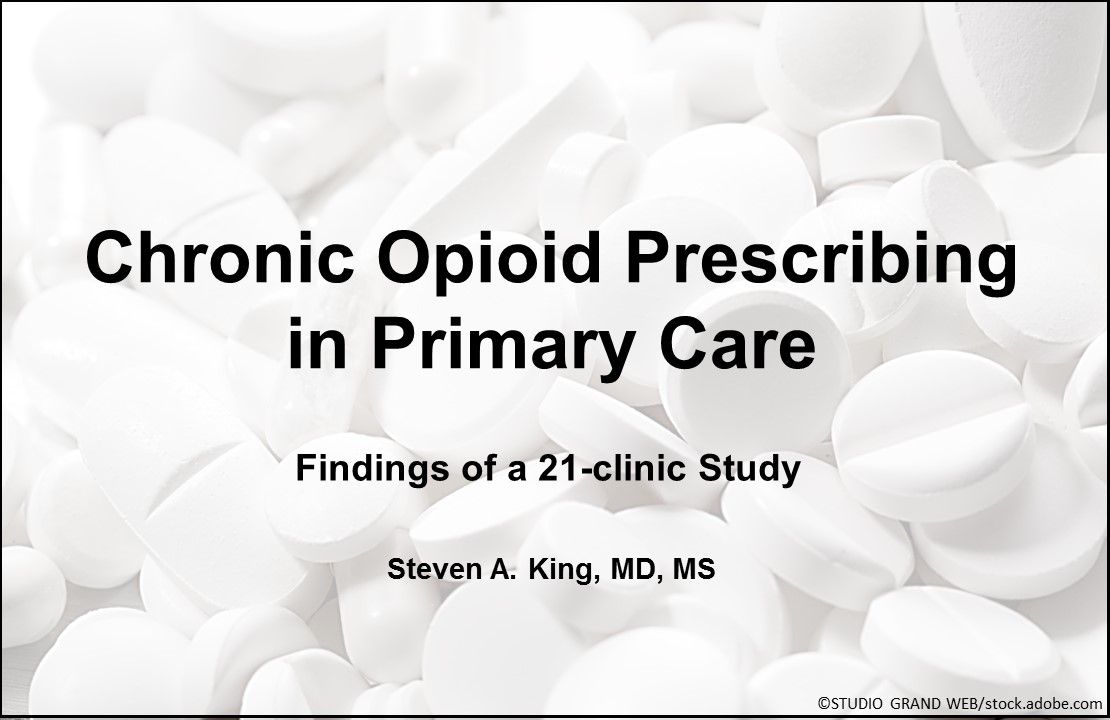
Despite this, there is little information regarding the characteristics of patients who receive opioids chronically or the PCPs who prescribe them. A new study that reviewed the electronic health records of >84 000 patients seen at 21 primary care clinics over the course of 2016 offers further information on those patients who are being prescribed opioids chronically by PCPs.
What were the results? Test your intuition with the 9 questions above that are based on the study and its outcomes.

Question 1. Approximately what percentage of patients were prescribed opioids on a chronic basis (at least 3 consecutive months)?
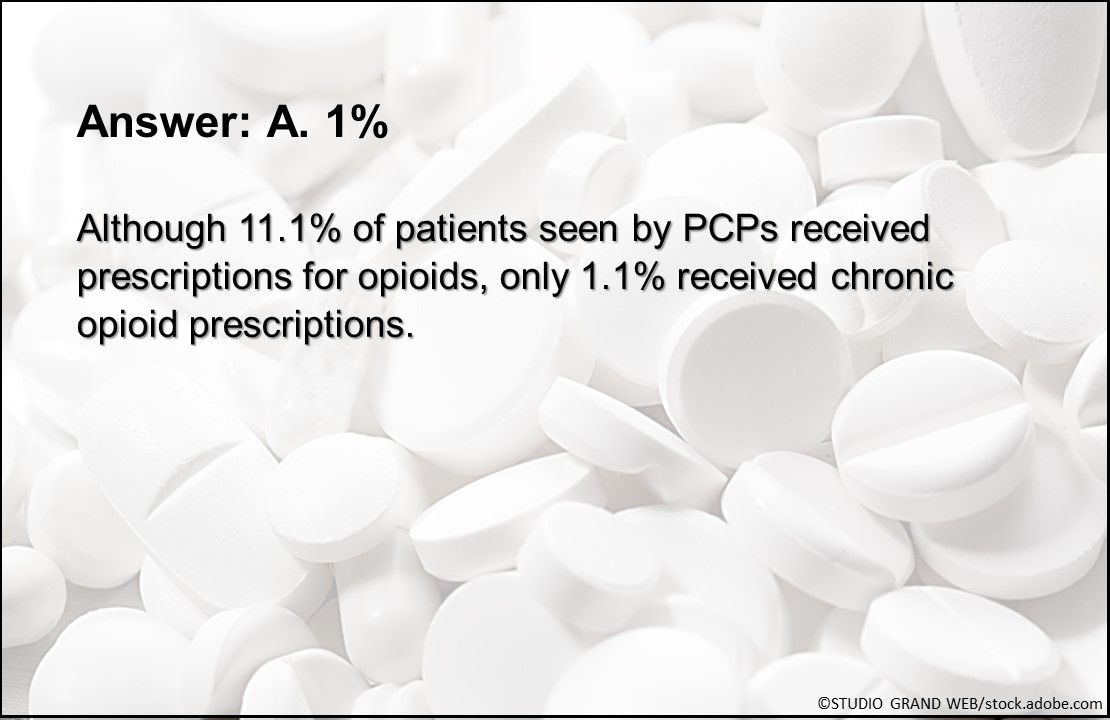
Answer: A. 1%. Although 11.1% of patients seen by PCPs received prescriptions for opioids, only 1.1% received chronic opioid prescriptions.
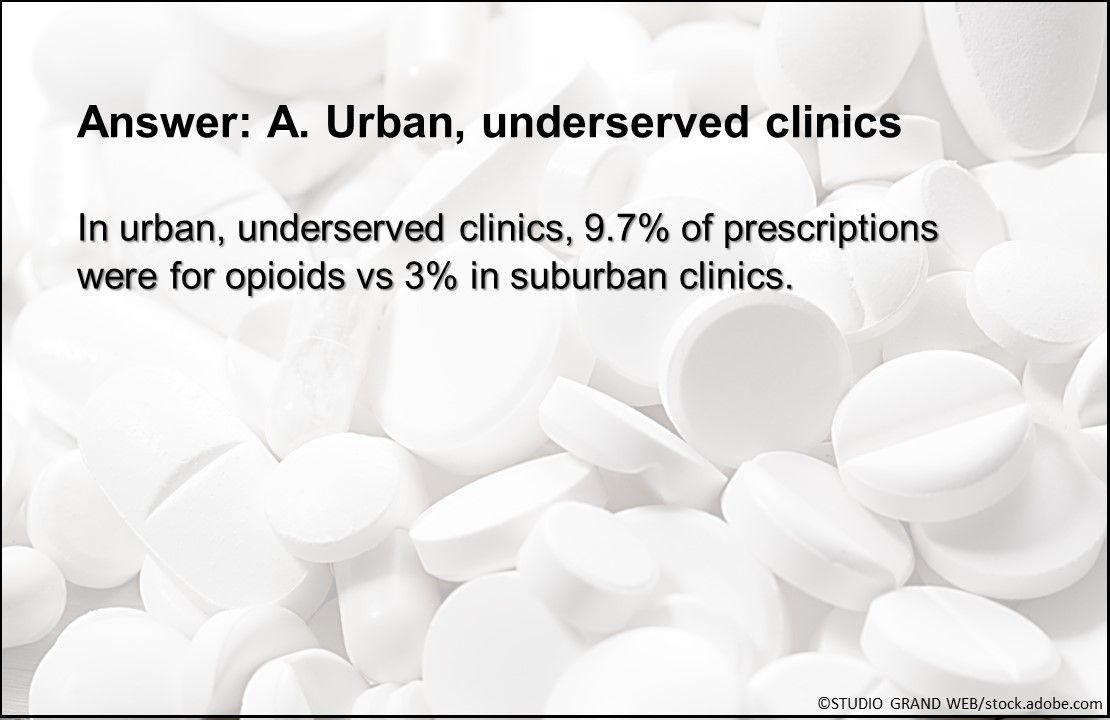
Answer: A. Urban, underserved clinics. In urban, underserved clinics, 9.7% of prescriptions were for opioids vs 3% in suburban clinics.

Question 3. True or false? The most commonly prescribed opioids were the same in both urban, underserved clinics and suburban clinics.
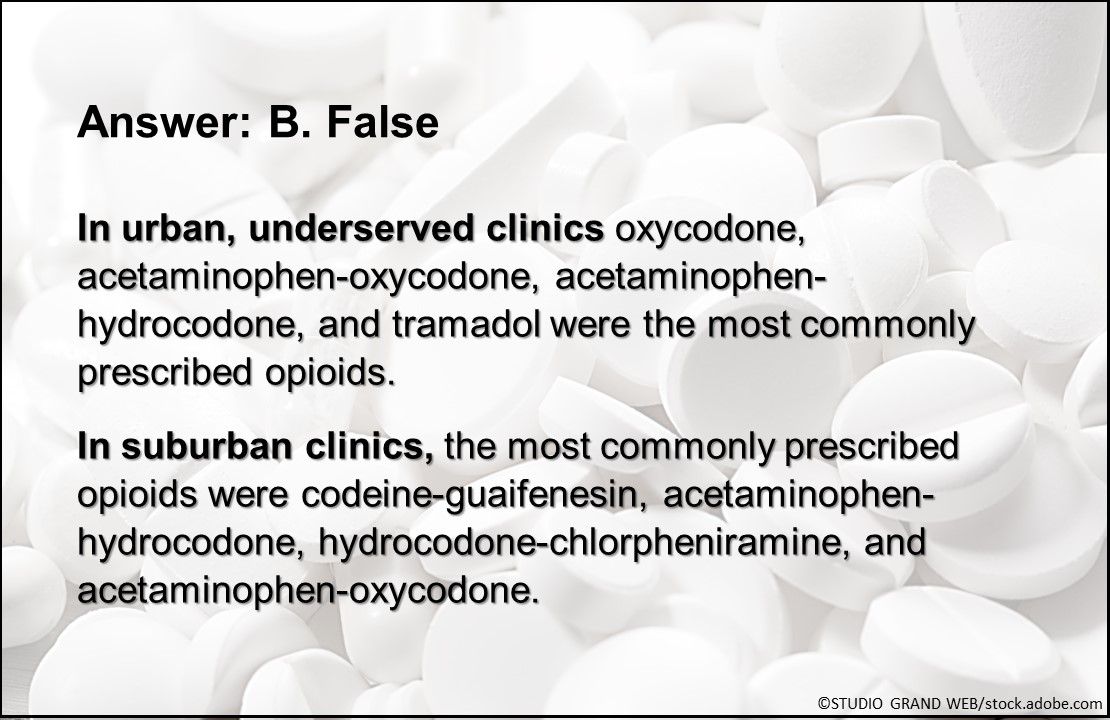
Answer: B. False. In urban, underserved clinics oxycodone, acetaminophen-oxycodone, acetaminophen-hydrocodone, and tramadol were the most commonly prescribed opioids. In suburban clinics, the most commonly prescribed opioids were codeine-guaifenesin, acetaminophen-hydrocodone, hydrocodone-chlorpheniramine, and acetaminophen-oxycodone.

Question 4. True or false? In both urban, underserved and suburban primary care clinics, opioids were among the top 10 prescription medications.

Answer: B. False. In the urban, underserved clinics, oxycodone was the 6th most prescribed drug and acetaminophen-oxycodone the 8th. In suburban clinics, the 2 most prescribed opioids, codeine-guaifenesin and hydrocodone-acetaminophen were the 47th and 56th most prescribed medications. Study authors did not speculate on why opioids were far more commonly prescribed in urban, underserved clinics or on why all the most commonly prescribed opioids in that setting were for analgesia while the most common opioid in suburban clinics is usually prescribed as a cough suppressant rather than for analgesia.

Answer: A. Women. Although in the study, women made up 60.2% of patient who were not receiving chronic opioids, they did account for 65.5% of patients who did receive them.
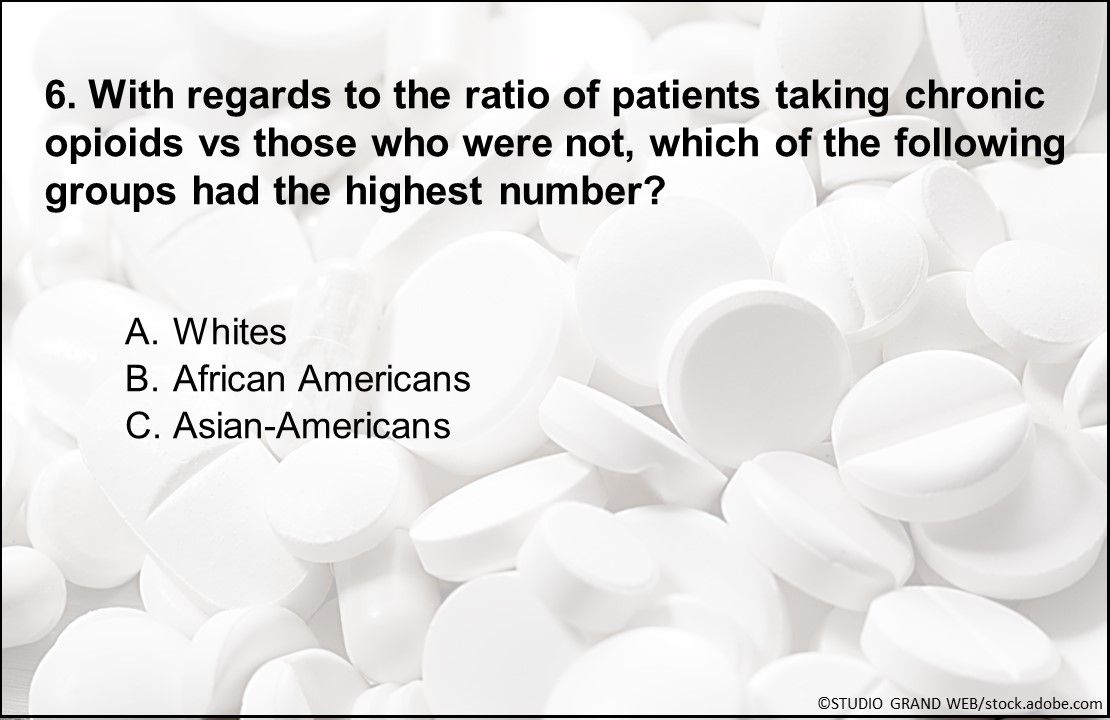
Question 6. With regards to the ratio of patients taking chronic opioids vs those who were not, which of the above groups had the highest number?
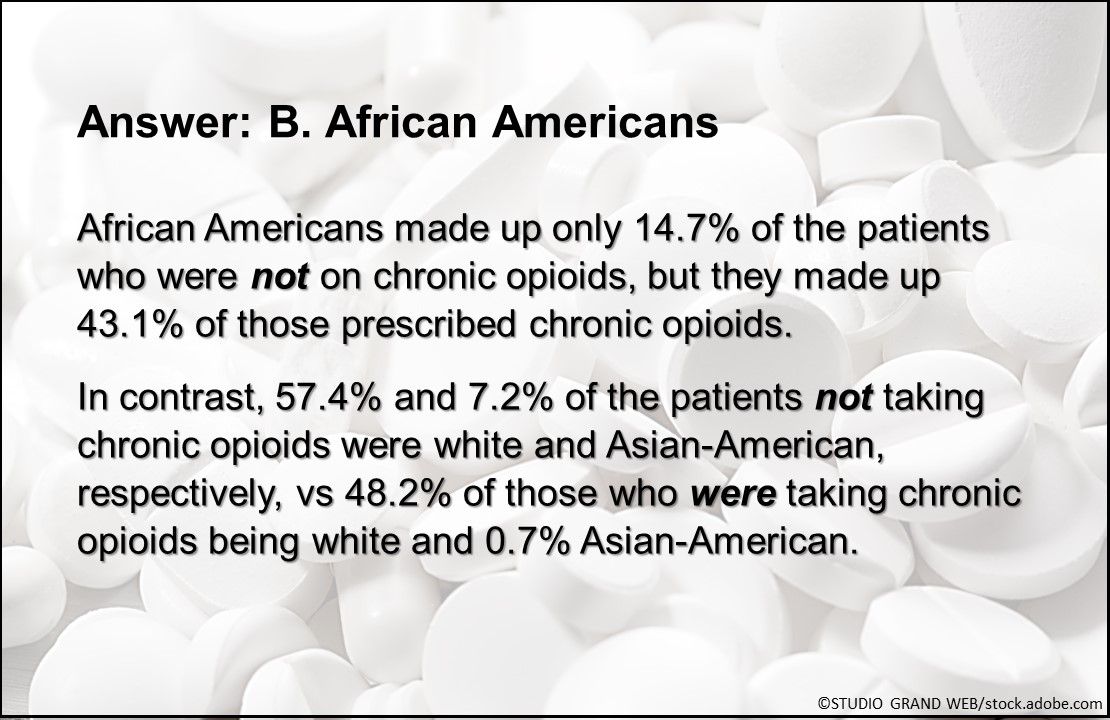
Answer: B. African Americans. African Americans made up only 14.7% of the patients who were not on chronic opioids, but they made up 43.1% of those prescribed chronic opioids. In contrast, 57.4% and 7.2% of the patients not taking chronic opioids were white and Asian-American, respectively, vs 48.2% of those who were taking chronic opioids being white and 0.7% Asian-American.
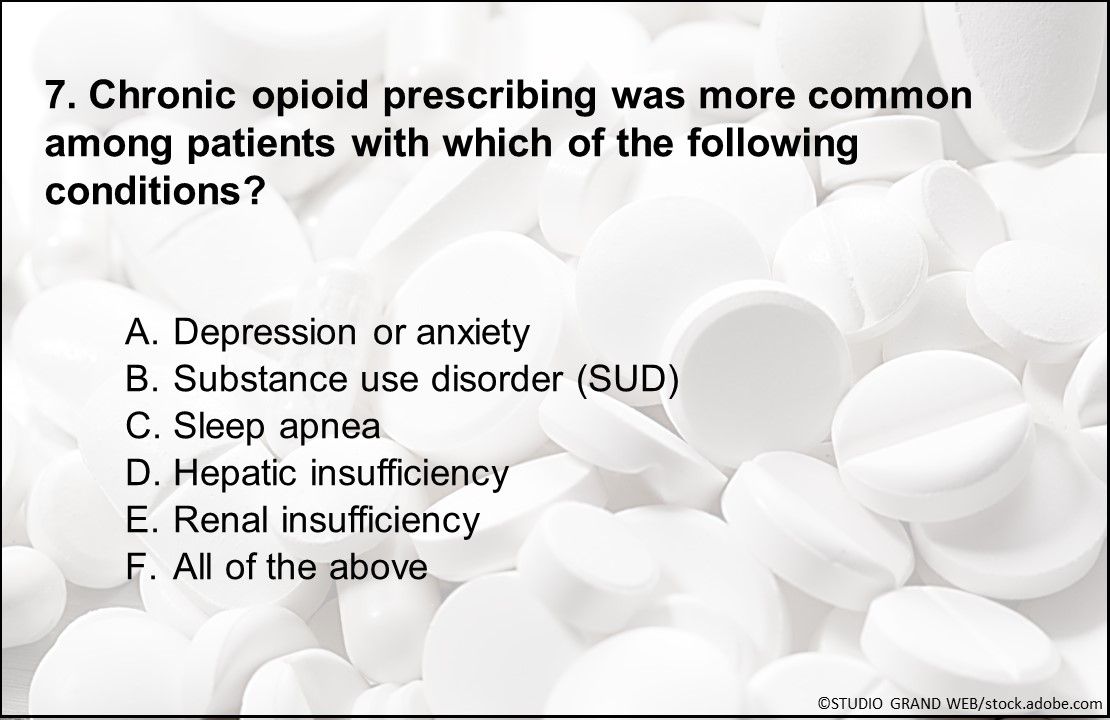
Question 7. Chronic opioid prescribing was more common among patients with which of the above conditions?
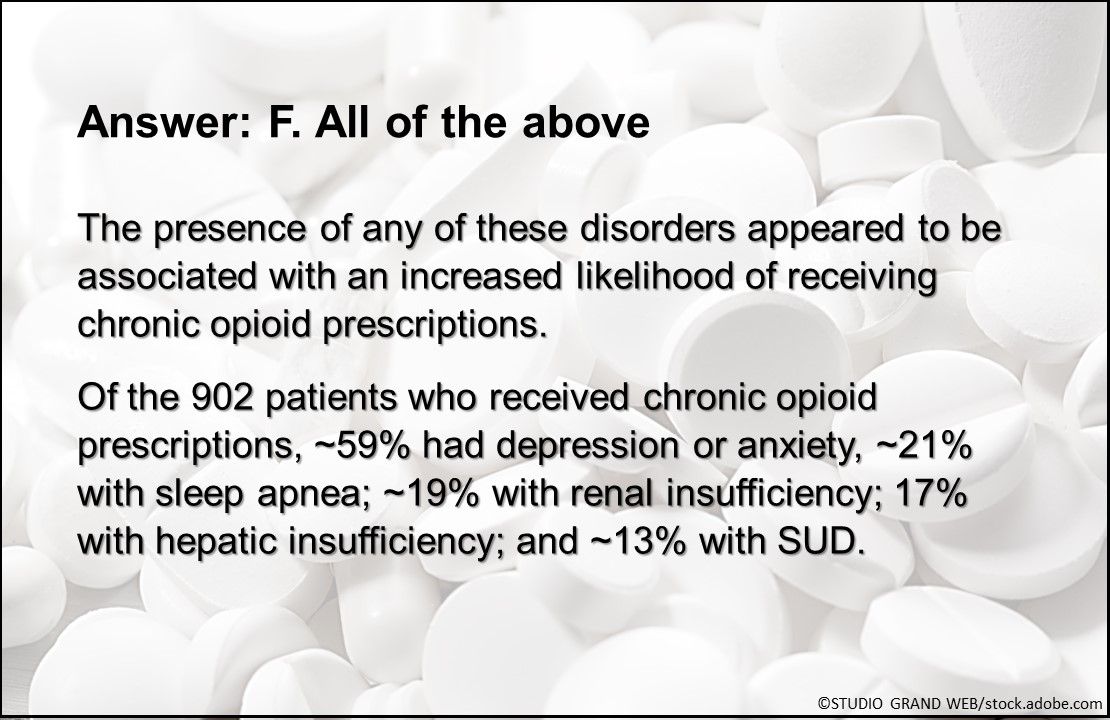
Answer: F. All of the above. The presence of any of these disorders appeared to be associated with an increased likelihood of receiving chronic opioid prescriptions. Of the 902 patients who received chronic opioid prescriptions, ~59% had depression or anxiety, ~21% with sleep apnea; ~19% with renal insufficiency; 17% with hepatic insufficiency; and ~13% with SUD.
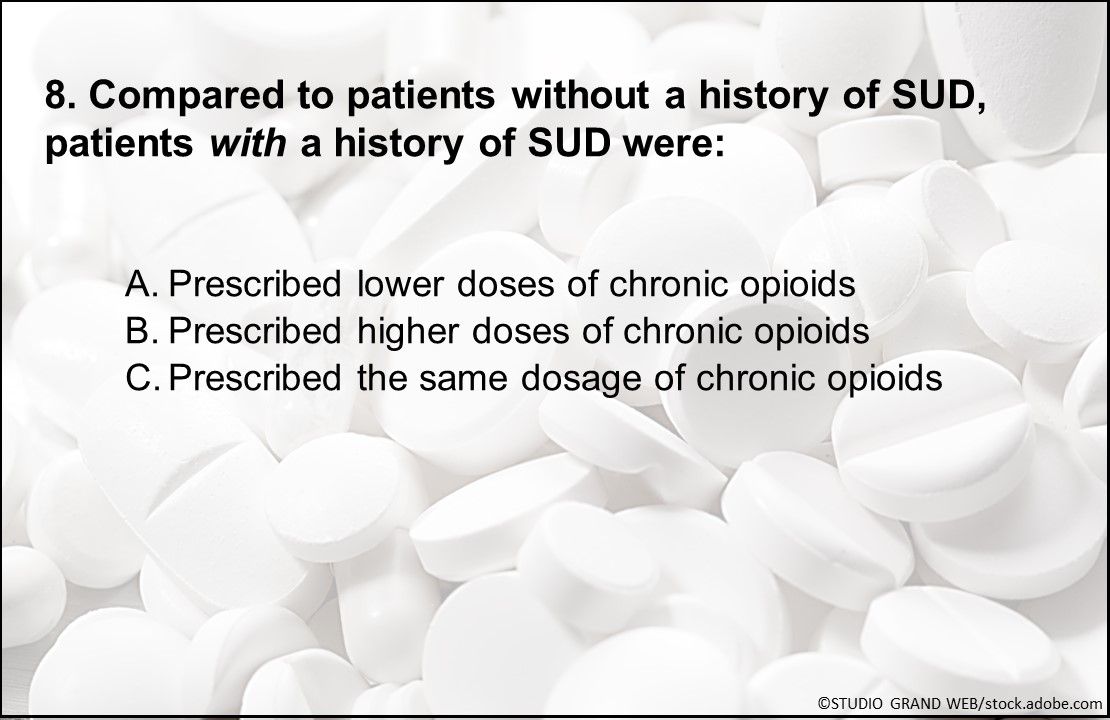
Question 8. How did the dosage amount differ, if at all, from patients without a history of SUD vs those with a history of SUD?
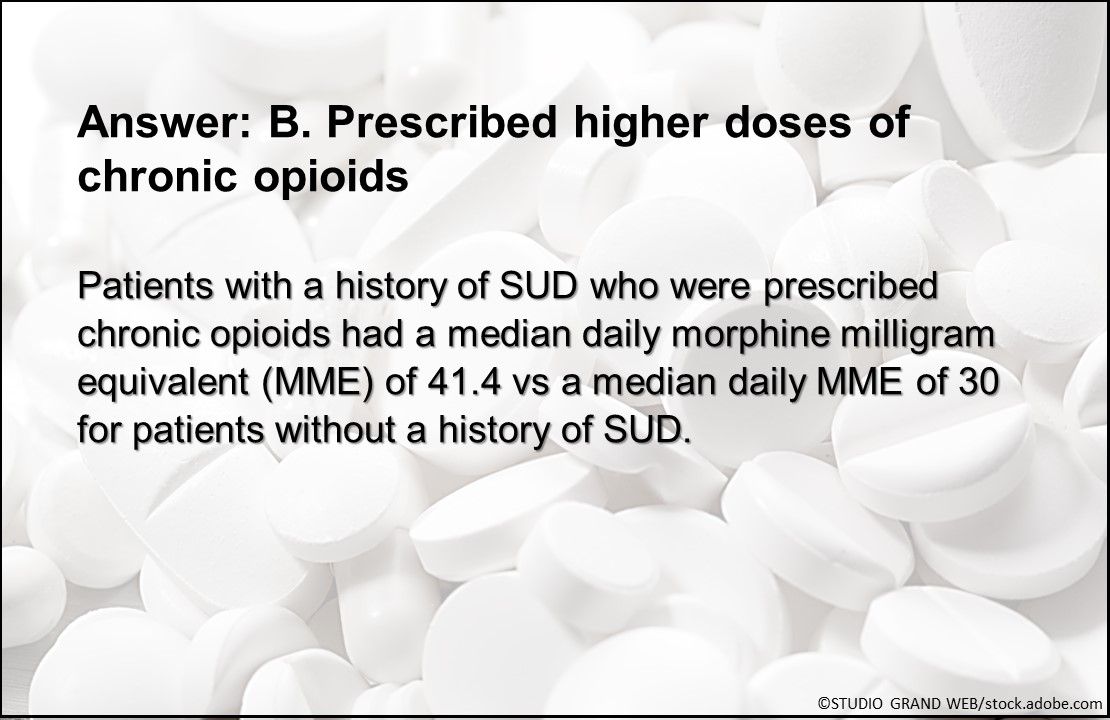
Answer: B. Prescribed higher doses of chronic opioids. Patients with a history of SUD who were prescribed chronic opioids had a median daily MME of 41.4 vs a median daily MME of 30 for patients without a history of SUD.
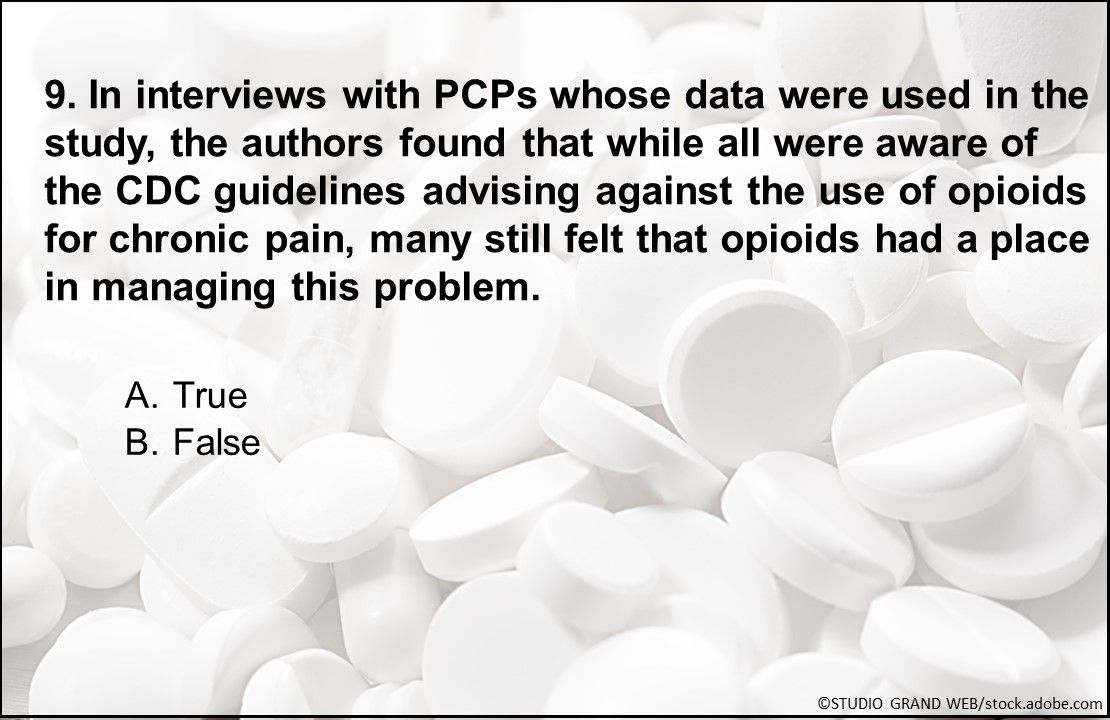
Question 9. True or false? In interviews with PCPs whose data were used in the study, the authors found that while all were aware of the CDC guidelines advising against the use of opioids for chronic pain, many still felt that opioids had a place in managing this problem.
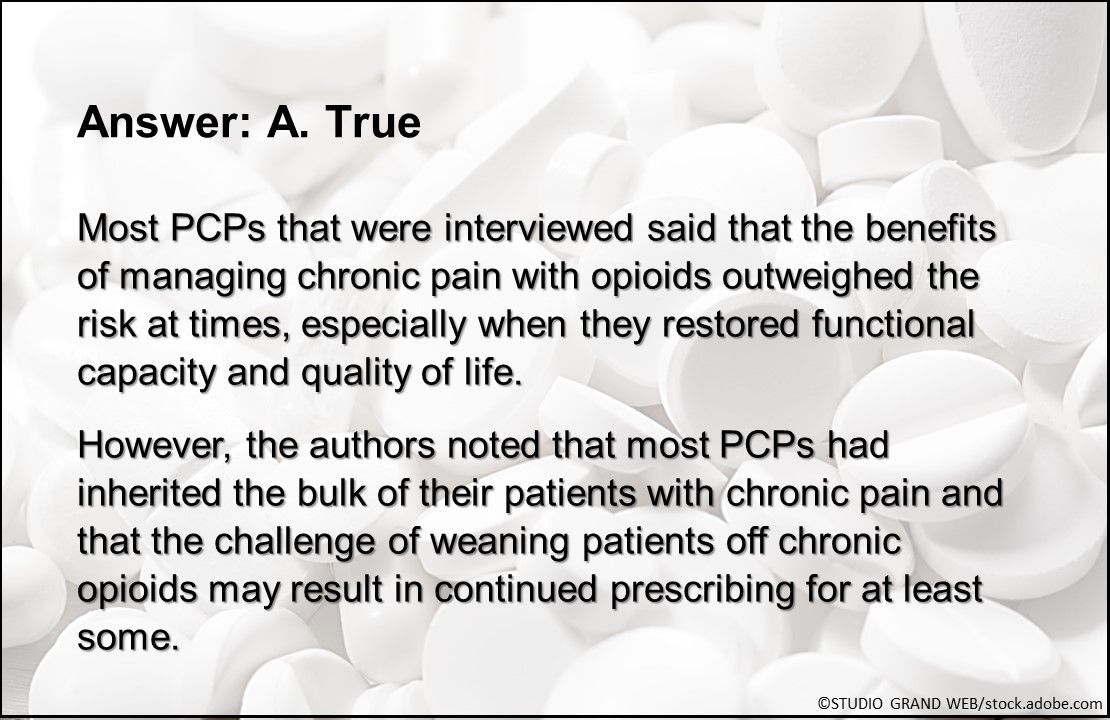
Answer: A. True. Most PCPs that were interviewed said that the benefits of managing chronic pain with opioids outweighed the risk at times, especially when they restored functional capacity and quality of life. However, the authors noted that most PCPs had inherited the bulk of their patients with chronic pain and that the challenge of weaning patients off chronic opioids may result in continued prescribing for at least some.
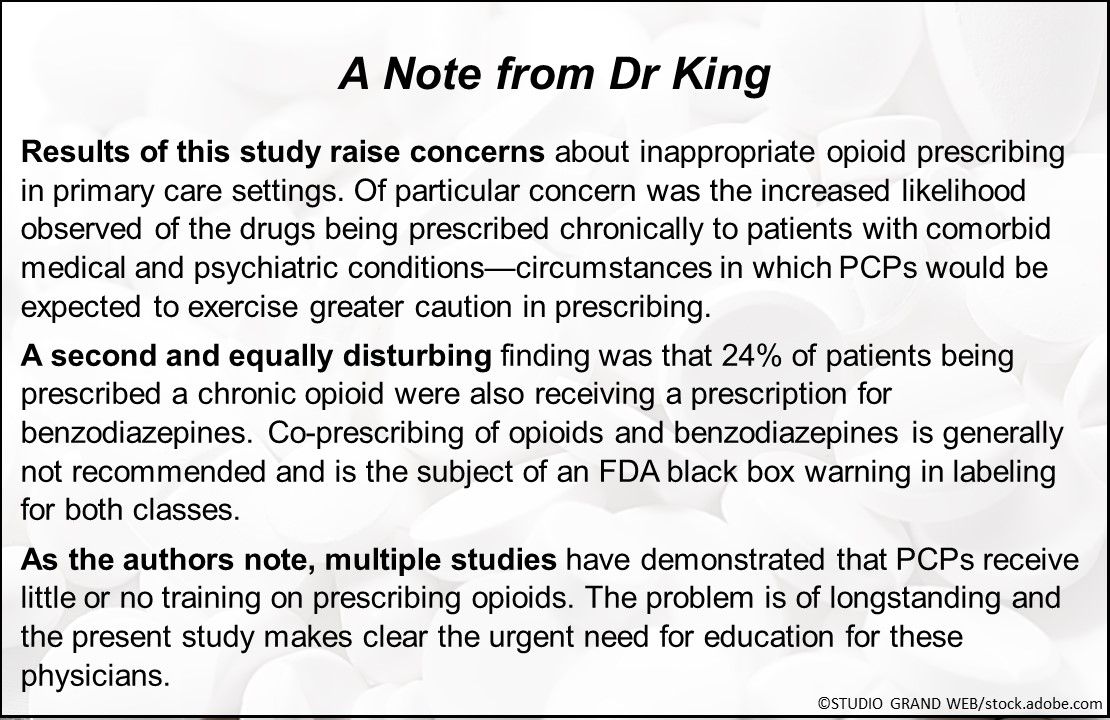
Dr King's Take Home Points:
- Study results raise concerns about inappropriate opioid prescribing in primary care clinics
- Rising likelihood of drugs being prescribed chronically to those with comorbid medical, psychiatric conditions is particularly concerning
- 24% of patients receiving chronic opioids were also receiving prescription for benzodiazepines (not generally recommended)
- Multiple studies demonstrate that PCPs receive little or no training on prescribing opioids; present study makes clear the urgent need for education
Reference: Tong ST, Hochheimer CJ, Brooks EM, et al. Chronic opioids prescribing in primary care: factors and perspectives. Ann Fam Med. 2019;17:200-206.
Multiple clinical practice guidelines including those issued by the Centers for Disease Control (CDC) recommend that opioids should generally not be prescribed for extended periods. However, some patients are still being prescribed opioids on a chronic basis by a primary care physician (PCP) with 45% of all opioid prescriptions in the US being written by PCPs. (continued below)
Related Content:





